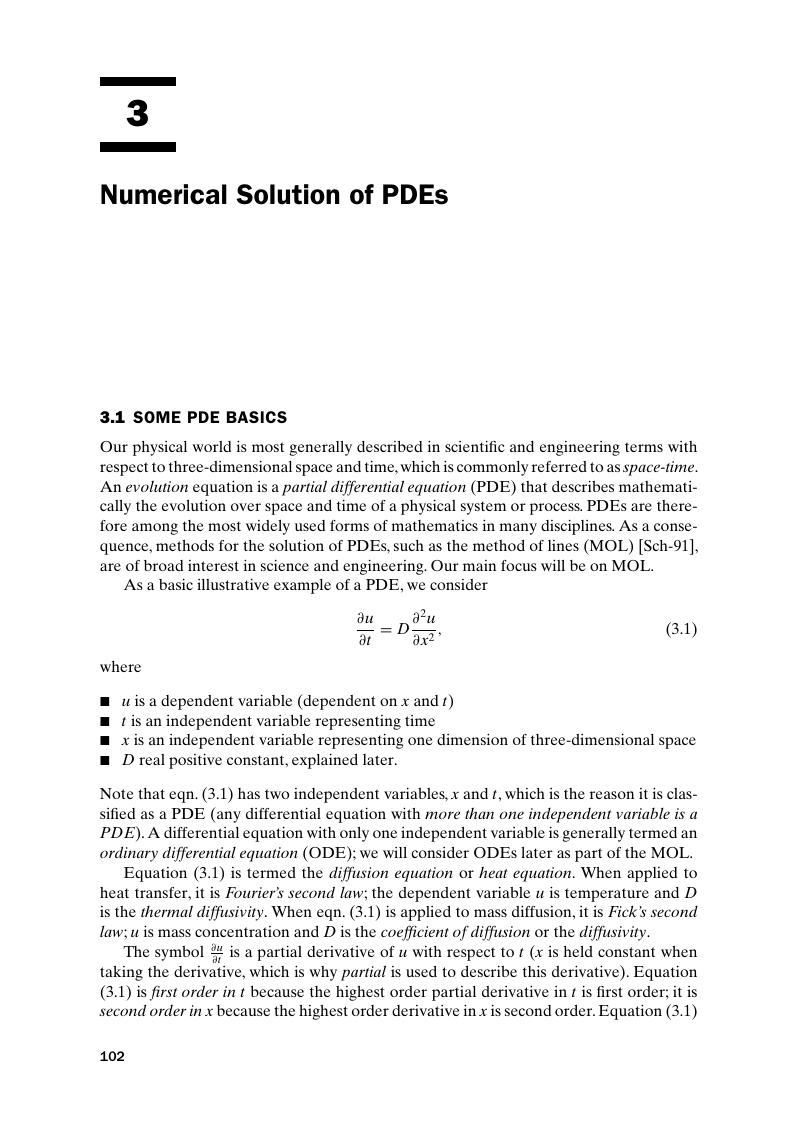Book contents
- Frontmatter
- Dedication
- Contents
- Preface
- 1 ODE Integration Methods
- 2 Stability Analysis of ODE Integrators
- 3 Numerical Solution of PDEs
- 4 PDE Stability Analysis
- 5 Dissipation and Dispersion
- 6 High-Resolution Schemes
- 7 Meshless Methods
- 8 Conservation Laws
- 9 Case Study: Analysis of Golf Ball Flight
- 10 Case Study: Taylor–Sedov Blast Wave
- 11 CaseStudy: The Carbon Cycle
- Appendix: A Mathematical Aide-Mémoire
- Index
- Plate section
- References
3 - Numerical Solution of PDEs
Published online by Cambridge University Press: 05 May 2016
- Frontmatter
- Dedication
- Contents
- Preface
- 1 ODE Integration Methods
- 2 Stability Analysis of ODE Integrators
- 3 Numerical Solution of PDEs
- 4 PDE Stability Analysis
- 5 Dissipation and Dispersion
- 6 High-Resolution Schemes
- 7 Meshless Methods
- 8 Conservation Laws
- 9 Case Study: Analysis of Golf Ball Flight
- 10 Case Study: Taylor–Sedov Blast Wave
- 11 CaseStudy: The Carbon Cycle
- Appendix: A Mathematical Aide-Mémoire
- Index
- Plate section
- References
Summary

- Type
- Chapter
- Information
- Numerical Analysis Using RSolutions to ODEs and PDEs, pp. 102 - 224Publisher: Cambridge University PressPrint publication year: 2016



